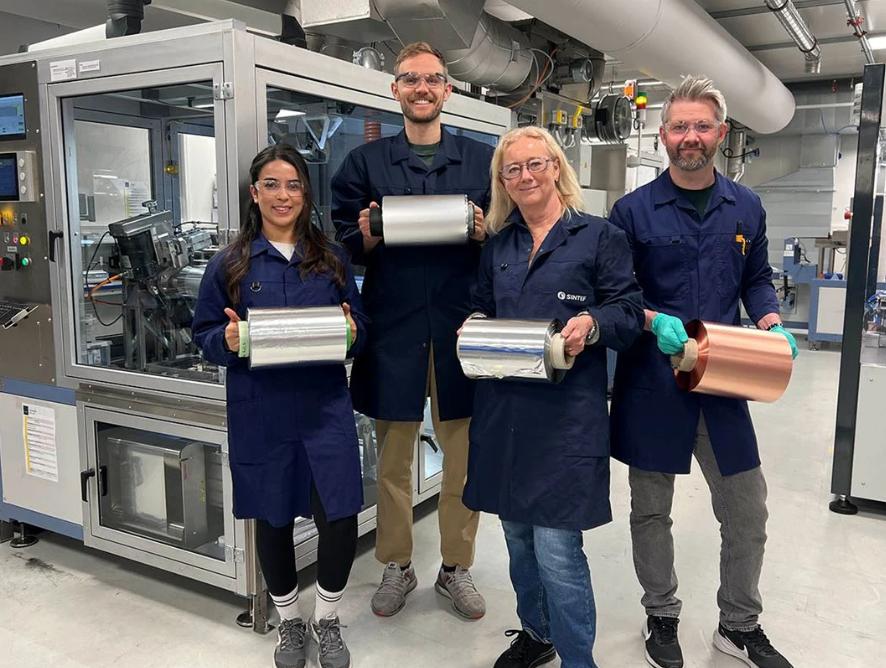

SINTEF’s Battery Technology group has reached a major milestone by successfully producing high-loading electrode rolls using sustainable materials like aluminium, a vital breakthrough in scaling up next-generation battery cell technology. This achievement marks a significant step forward for the EU-funded IntelLiGent project, which is focused on developing cutting-edge, high-voltage lithium-ion cells for the electric vehicles (EVs) of tomorrow.

Electrode manufacturing remains one of the toughest challenges in expanding battery production and overcoming it is key to Europe’s ambition of building a self-sufficient, competitive battery industry. With this progress, IntelLiGent is helping pave the way toward a greener, more resilient future for European e-mobility.
This achievement was made possible through close collaboration with partners in the IntelLiGent project -
The next phase will see Millor assembling the electrodes into full battery modules. This will serve as a high-TRL (Technology Readiness Level) demonstration of the LNMO||Si-Gr cell technology, marking a significant step toward proving its performance and potential in real-world applications.
Also Read: Q1 2025 global EV battery market: China’s dominance intensifies
In a significant stride for battery innovation, the Battery Technology group at SINTEF, as part of the IntelLiGent project, has successfully scaled up production of advanced electrode layers, bringing lab concepts closer to commercial reality. These ultra-thin, double-sided layers, made from lithium nickel manganese oxide (LNMO) for the cathode and a silicon-graphite blend for the anode, are now being produced on continuous rolls over 100 meters long with micrometer-level precision.
“This is a great achievement for our group, done at the SINTEF Battery Lab, which is part of the NABLA infrastructure here in Norway. It demonstrates one of the first European examples of high loading water processed LNMO cathode upscaling, and also one of the first upscaled electrode production in Norway. Hopefully, this can be a much-needed spark for Norwegian battery research to move towards industrial cell manufacturing locally”, said project coordinator and Senior Research Scientist at SINTEF, Nils Peter Wagner.
What’s more, the team has ditched the toxic solvent NMP, opting instead for environmentally friendly aqueous binders to craft these high-loading electrodes—marking a big leap toward greener battery manufacturing. Next, these long electrode rolls will be sliced into compact sheets and stacked into multi-layered pouch cells, ready for rigorous electrochemical testing.
“The upscaling of battery electrodes is not trivial, and especially water-based processing at high loadings is proven to be very challenging. This is an important milestone for the project, as the quality of the electrode directly reflects on the quality of the battery cells that will be assembled in the coming months”, added Nils Peter Wagner.
Also Read: Boosting aluminium-ion battery innovation for sustainable energy storage with Sakuu®
Image Source: SINTEF
Responses








